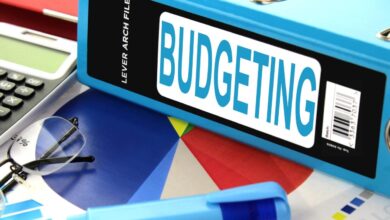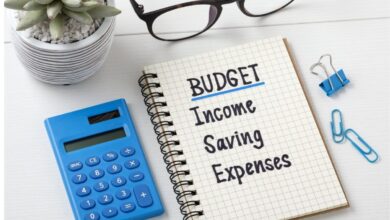Build Your Emergency Fund: Secure Your Future

In the unpredictable landscape of life, where the only certainty is change, the concept of an emergency fund stands as the ultimate financial defense mechanism.
Many people view saving as something you do after all the bills are paid and all the wants are fulfilled, relegating the emergency fund to a mere financial afterthought.
This passive approach often leaves them profoundly vulnerable to life’s inevitable shocks, forcing them into a crippling cycle of high-interest debt, such as maxing out credit cards or taking out predatory personal loans, the moment a car breaks down or a medical bill arrives.
An emergency fund is not simply a pile of money sitting idly in a bank account; it is peace of mind translated into liquid assets, a vital shield that protects your existing investments, retirement savings, and mental health from sudden catastrophic events.
It serves as a necessary buffer between stability and financial disaster, allowing you to handle job loss, unexpected repairs, or family emergencies without derailing years of careful financial planning.
Creating this fund is the fundamental first step on the journey toward true financial security, effectively insulating your life from the inevitable uncertainty of the world and giving you the power to react calmly rather than panic during a crisis.
I. Defining the Emergency Fund: Not Just Any Savings

It is crucial to understand the specific purpose and characteristics of an emergency fund, distinguishing it from general savings or investment accounts.
A. The Purpose of the Fund
The emergency fund is strictly for unexpected, true emergencies, which are necessary, urgent, and unplanned expenses.
True emergencies include job loss, major uninsured medical expenses, sudden essential home repairs, or unexpected car failure. It is not for planned expenses like vacations, holiday shopping, or a down payment on a new TV.
B. Distinguishing from General Savings
General savings are typically earmarked for planned expenses, such as a future house deposit, a vacation, or a planned car replacement. The emergency fund must never be touched for these planned goals, regardless of how tempting it may be.
C. The Goal: Three to Six Months of Expenses
The generally accepted and recommended target for a fully funded emergency fund is enough money to cover three to six months of essential living expenses. If you are a freelancer, a contractor, or work in a volatile industry, aiming for six to twelve months of expenses is the safer, more conservative standard.
D. Calculating Your Essential Expenses
To set your savings target, you must accurately calculate your “survival number,” which is the bare minimum amount needed to cover your necessities for one month.
- A. Housing: Rent or mortgage payment and utilities (electricity, water, basic internet).
- B. Food: Groceries only; drastically reduce or eliminate dining out.
- C. Transportation: Minimum car payment, gas, or public transport pass.
- D. Minimum Debt Payments: Only the minimum payment required to keep your debt current (credit cards, student loans).
- E. Insurance and Basic Healthcare: Health insurance premiums and essential prescriptions.
II. The Foundational Step: The Mini-Fund
Before aiming for the full six-month target, you need to establish a smaller, more achievable goal to gain immediate protection and early momentum.
A. The $1,000 Starter Goal
Financial experts often recommend starting with a “mini-emergency fund” of $1,000 to $2,000. This smaller, less daunting target provides immediate motivation and acts as a small but effective buffer against the most common minor financial emergencies.
B. What the Mini-Fund Covers
This smaller fund is often enough to cover a minor car repair, an unexpected deductible, or a temporary reduction in work hours. It ensures that a small crisis does not immediately force you back into high-interest consumer debt.
C. The Psychological Win
Reaching the $1,000 goal quickly provides a major psychological boost. This early success proves to yourself that you are capable of saving, building the discipline and momentum needed for the much larger, long-term goal.
D. Prioritizing the Mini-Fund
The starter fund should be your absolute first financial priority after paying your regular bills. Aggressively tackle this goal before focusing on paying off major debts or making long-term investments.
III. Where to Keep the Emergency Fund

The location of your emergency fund is a strategic decision that balances accessibility, safety, and growth potential.
A. High-Yield Savings Accounts (HYSA)
This is the consensus choice for the emergency fund location, offering the best balance of safety and liquidity.
- A. Liquidity: Funds can be withdrawn instantly without penalty, which is crucial in a true emergency.
- B. Safety: These accounts are insured by government agencies (e.g., FDIC in the US), guaranteeing your money up to a certain limit.
- C. Growth: HYSAs offer significantly higher interest rates than traditional bank savings accounts, allowing your money to at least keep pace with minor inflation.
B. Not in the Checking Account
Do not keep the emergency fund in your primary checking account. If it’s too readily accessible, you are more likely to spend it on non-emergencies, treating it as simply extra spending money.
C. Not in the Stock Market
The emergency fund should never be invested in the stock market, mutual funds, or other volatile assets. While investments offer high potential returns, you cannot risk the capital being down 20% or 30% when a crisis hits, as the whole point is stability and accessibility.
D. Account Separation
Keep your emergency fund at a different bank or credit union than your primary checking account. This separation creates a necessary layer of friction, making you pause and think before transferring money out, thus protecting it from impulse spending.
IV. Strategy: Accelerating Your Fund Creation
Building a fund covering six months of expenses requires intentional strategies to free up and redirect cash flow aggressively.
A. Automate Your Contributions
Treat your emergency fund savings like any other non-negotiable bill. Set up an automatic transfer from your checking account to your dedicated savings account to occur immediately after payday. This ensures you “pay yourself first,” removing the decision-making process entirely.
B. Slash Non-Essential Spending
Conduct a radical audit of your budget and temporarily eliminate all non-essential spending. Cancel all streaming services, drastically reduce dining out, and pause non-essential hobbies. Dedicate 100% of these saved dollars to the emergency fund until the goal is met.
C. Windfalls and Bonuses
Any unexpected cash, such as work bonuses, tax refunds, inheritances, or large gifts (windfalls), should be directed immediately and entirely into the emergency fund. Do not treat these as opportunities for new purchases.
D. Implement a Savings Challenge
Use motivational tools to keep the savings process engaging.
- A. The No-Spend Challenge: Commit to one full month of buying absolutely nothing non-essential, dedicating all the saved money to the fund.
- B. Found Money Challenge: Commit to depositing every $5 bill (or currency equivalent) you receive in change into the savings account immediately.
E. Sell Unused Possessions
Conduct a “spring cleaning” of your home and sell any items you no longer need or use (furniture, electronics, clothing) on local marketplaces. This simultaneously raises cash and declutters your life, accelerating your progress toward the full fund.
V. Maintaining the Fund: Rules of Engagement
Once your fund is fully stocked, the next challenge is protecting it and using it wisely when a real crisis strikes.
A. The “Use It and Replace It” Rule
If a true emergency requires you to use some of the funds, commit immediately to the “use it and replace it” rule. Treat the withdrawal as a temporary loan to yourself, and aggressively save the withdrawn amount back into the fund as the new primary financial goal.
B. Re-Evaluating the Target
As your income increases, or as major life events occur (e.g., getting married, having a child, buying a home), your essential expenses will likely change. Make it a practice to re-evaluate your “survival number” annually and adjust your fund target accordingly.
C. Avoid Lifestyle Creep
Resist the urge to spend the surplus cash on unnecessary items once the fund is complete. The money’s job is not to spend; its job is to wait patiently for a crisis, providing security as you move on to investing and long-term wealth building.
D. The Job Loss Scenario
If the emergency is job loss, the fund’s purpose is to cover your essential expenses for several months, allowing you to search for a new job calmly without taking the first offer or depleting retirement accounts. Calculate how many months of runway you have left every week to manage anxiety and focus your job search.
VI. Emergency Fund vs. Debt Payoff: Which Comes First?
The question of whether to save or pay debt first is a common dilemma, and the answer is usually a balanced, two-step approach.
A. Prioritize the Mini-Fund
The consensus advice is to first establish the $1,000 to $2,000 mini-emergency fund. This small shield protects you from immediately cycling back into debt if a minor crisis occurs during your aggressive debt payoff period.
B. Attack High-Interest Debt
Once the mini-fund is secure, the next step is to aggressively pay off all high-interest consumer debt (credit cards, high-interest personal loans). The guaranteed return from avoiding 20%+ interest is mathematically better than the low interest earned in a savings account.
C. Build the Full Fund
After the high-interest debt is eliminated, immediately redirect all that powerful cash flow to finish building the full six-month emergency fund. This is the final step before moving on to serious investment.
D. Low-Interest Debt
Low-interest debts, such as mortgages or low-rate student loans, can often be maintained with minimum payments while you prioritize building the full emergency fund and accelerating investments, as the interest rate is often lower than the long-term stock market returns.
Conclusion
Building a robust emergency fund is the financial equivalent of reinforcing the structural integrity of your life. It provides the necessary stability, acting as a crucial shock absorber against the inevitable financial impacts of life’s curveballs.
This safety net ensures that unforeseen events are merely temporary inconveniences rather than life-altering disasters that destroy years of saving.
The discipline required to build this fund permanently transforms your relationship with money and spending. By dedicating your resources to this secure pool of cash, you gain genuine psychological freedom and peace of mind.
The fund is the unsung hero of your financial journey, silently protecting your future wealth and guaranteeing your ability to remain financially resilient through any storm.




